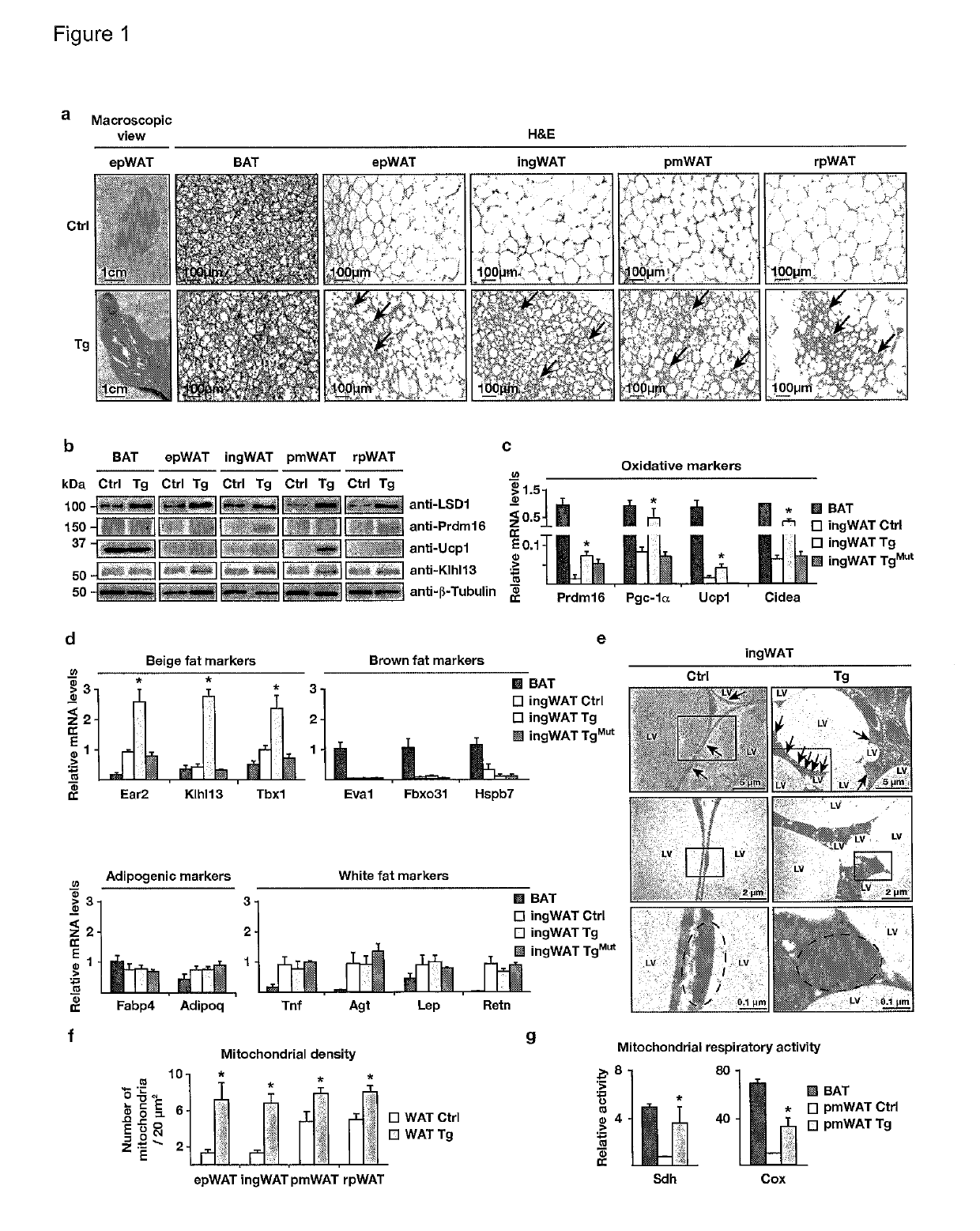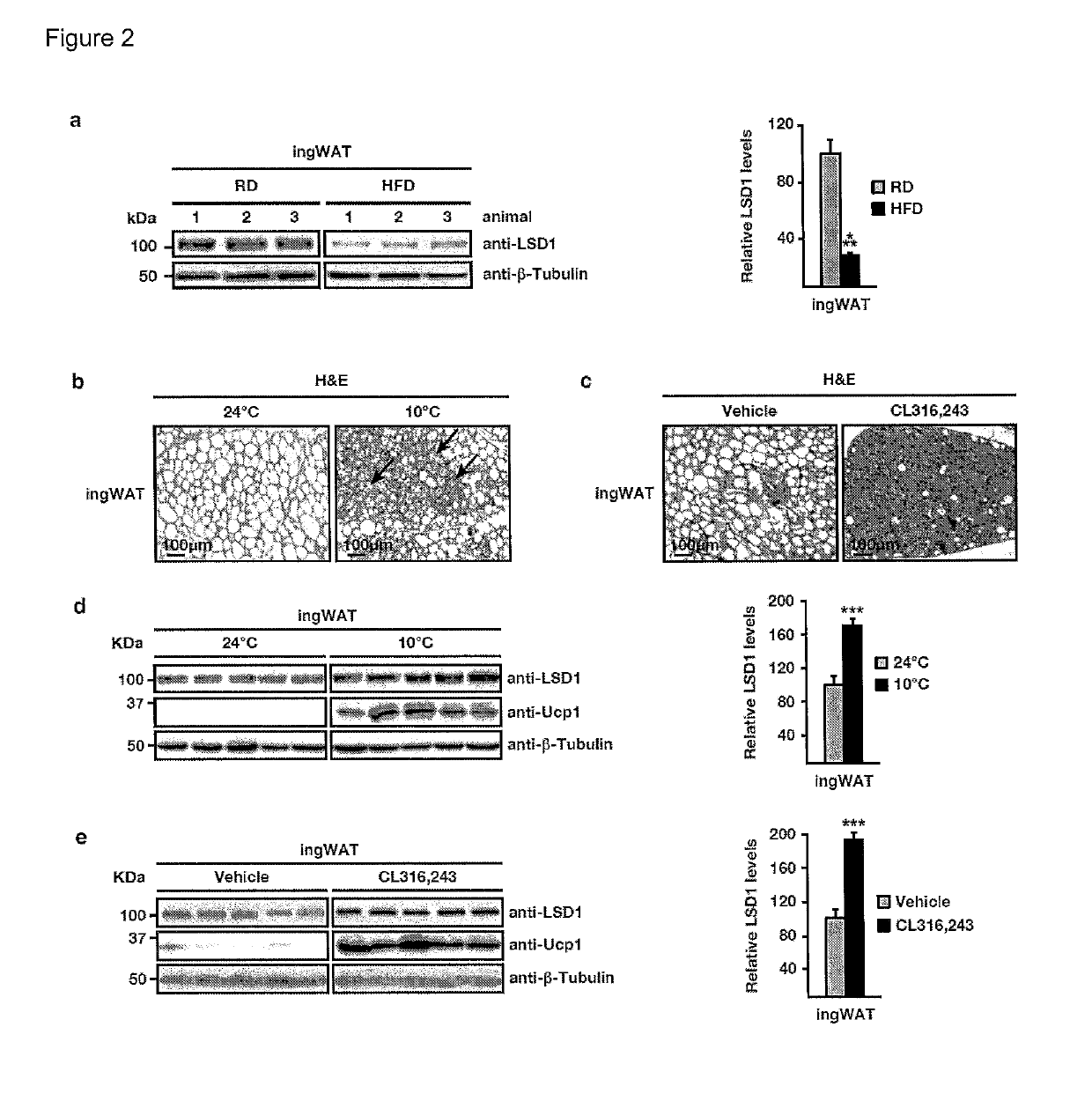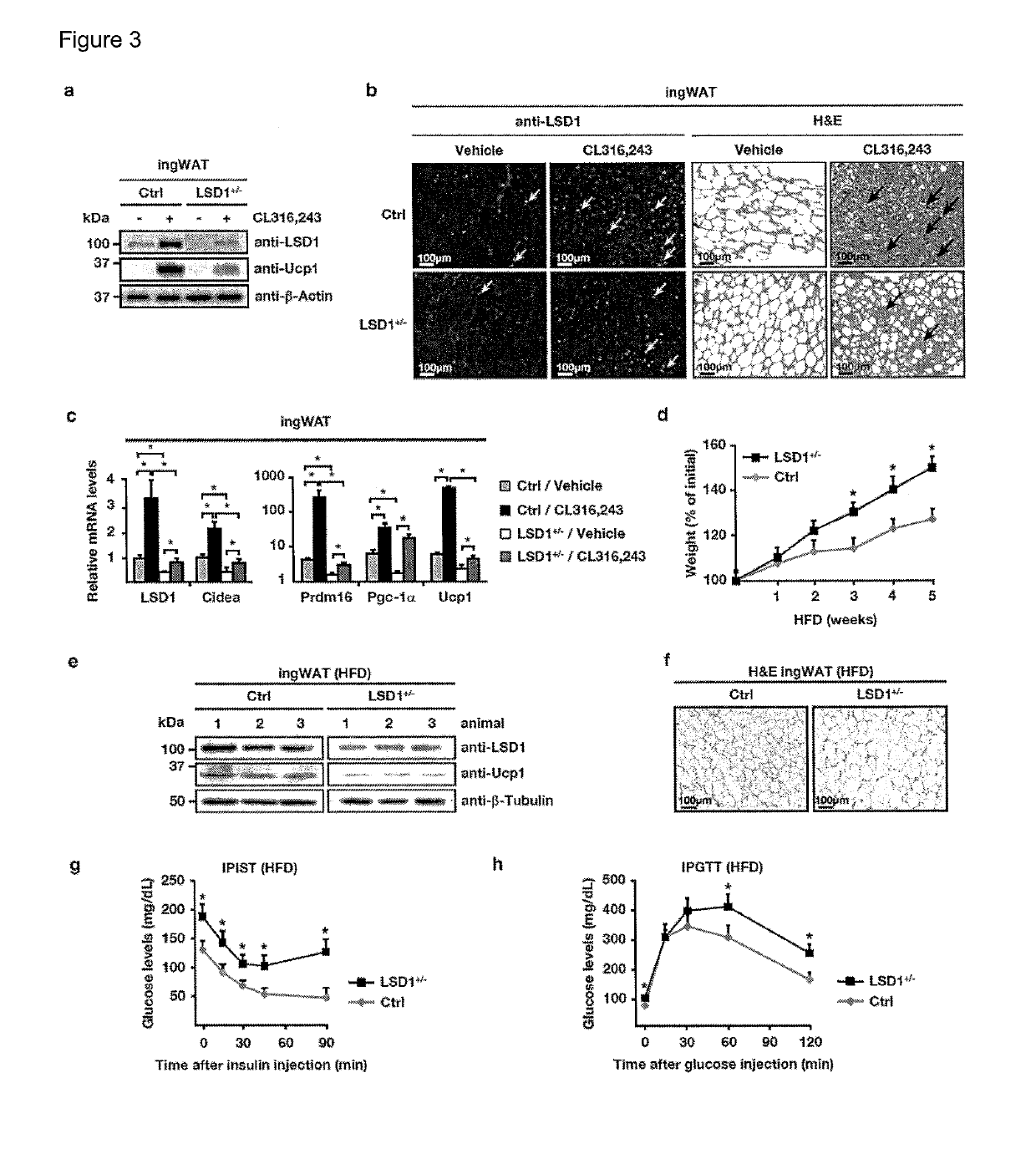Animal model for type 2 diabetes and obesity
a type 2 diabetes and animal model technology, applied in the field of animal model for type 2 diabetes and obesity, can solve the problems of not knowing whether beige adipocytes constitute and not knowing whether they are metabolically active fat cells
- Summary
- Abstract
- Description
- Claims
- Application Information
AI Technical Summary
Benefits of technology
Problems solved by technology
Method used
Image
Examples
examples
Results
LSD1 Promotes Formation of Functional Beige Fat
[0156]To investigate physiological functions of LSD1 in vivo, we analysed transgenic (Tg) mice ubiquitously expressing human LSD1 under the control of the Rosa26 promoter (FIG. 7a). Macroscopic inspection revealed intense browning of white fat pads of Tg mice (FIG. 1a). Detailed histological analyses showed the presence of multilocular brown or beige fat islets in all types of WAT [i.e. epididymal (ep), inguinal (ing), perimuscular (pm), and retroperitoneal (rp) WAT], whereas the morphology of interscapular BAT was not altered (FIG. 1a). Western blot, qRT-PCR, and immunofluorescence analyses confirmed elevated LSD1 levels in WAT and BAT of Tg compared to control mice (FIG. 1b, and FIG. 7b-d).
[0157]Consistent with the appearance of brown or beige adipocytes in WAT of Tg mice, analyses of transcript and protein levels revealed significantly increased expression of Prdm16, Pgc-1α, Ucp1, and several genes involved in oxidative metabo...
PUM
| Property | Measurement | Unit |
|---|---|---|
| diameter | aaaaa | aaaaa |
| body weight | aaaaa | aaaaa |
| temperature | aaaaa | aaaaa |
Abstract
Description
Claims
Application Information
 Login to View More
Login to View More - R&D
- Intellectual Property
- Life Sciences
- Materials
- Tech Scout
- Unparalleled Data Quality
- Higher Quality Content
- 60% Fewer Hallucinations
Browse by: Latest US Patents, China's latest patents, Technical Efficacy Thesaurus, Application Domain, Technology Topic, Popular Technical Reports.
© 2025 PatSnap. All rights reserved.Legal|Privacy policy|Modern Slavery Act Transparency Statement|Sitemap|About US| Contact US: help@patsnap.com



